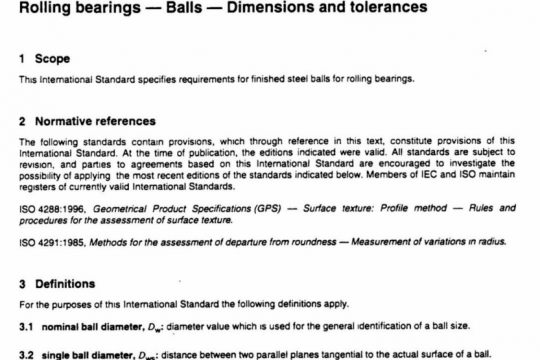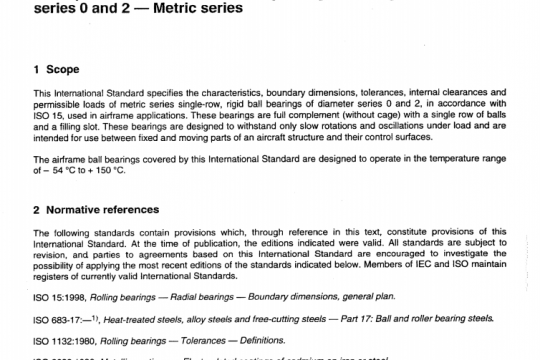ABMA 26.2:1994 pdf free
ABMA 26.2:1994 pdf free.Thin Section Ball Bearings Inch Design
Even a very light gauge pressure in two-point diameter measurement may cause unacceptable radial deflection. Non-contacting gauging with the bearing axis preferably in a vertical position must be used for the measurement of inner ring bore diameters and outer ring outside diameters. Bearing rings may be out-of-round in the free state in excess of the ANSI/ABMA Standard 20 limits for the equivalent size; but this condition has proven to be acceptable since the rings readily conform to their shaft and housing seats. Diameter size for the thin section bearings is expressed in terms of an average which requires the averaging of diameter measurements taken at many angular positions, i.e., using the mean of a single minimum and a single maximum diameter is not sufficient. Tolerances for inner ring bore diameter and outer ring outside diameter do not apply to bearings supplied by the manufacturer with internal preload.
Radial runout and face runout with raceway of assembled bearings is not specified for these bearings since accurate measurement is not possible. Instead tolerance limits apply to individual inner and outer rings by applying the K; Ke, S; and Sevalues in the tolerance tables.
Internal radial clearance is generally controlled by the manufacturer by selective assembly of rings and balls using measurements of raceway diameters and ball size. Because of free-state out-of-round and measurement deflection of the rings,accurate measurement of assembled bearing radial internal clearance, either directly or with special measuring equipment, is difficult. Clearance measurement methods must be coordinated with the manufacturer.
Similarly, axial internal clearance or preload of duplex angular contact bearings is generally controlled by the manufacturer by selective assembly or ring face grinding to result in the desired amount of axial looseness or interference when the two bearings are clamped side-by-side in either a face-to-face or back-to-back arrangement. Measuring methods for these features must also be coordinated with the manufacturer.ABMA 26.2 pdf free download.




